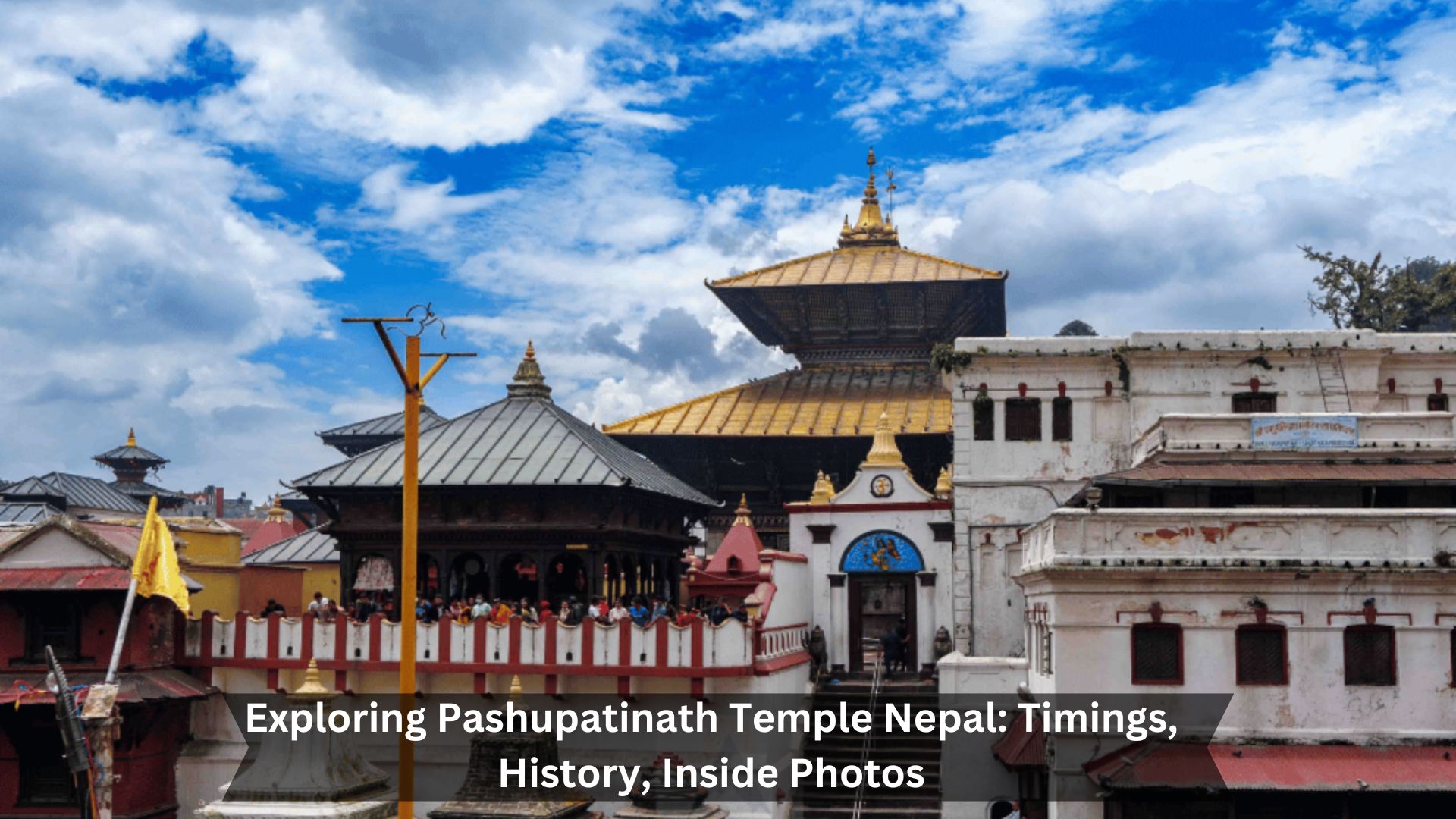Pashupatinath Temple is right on the Bagmati River in Nepal. It celebrates Nepal’s deep religious roots and beautiful architecture. The temple started in the 4th century during the Licchavi dynasty and honors Lord Shiva as Pashupati.
This place contains old stories, including one where Lord Shiva and Goddess Parvati turned into deer. They rebuilt it in the 17th century, and it’s full of unique wood carvings, gold, and silver. It’s also a UNESCO World Heritage Site. The temple isn’t just about religion; it’s a key spot for cultural and spiritual events, drawing people worldwide.
Timings to Visit Pashupatinath Temple
Daily opening and closing times

Pashupatinath Temple is open every day from 4:00 AM to 9:00 PM. It offers a great chance to see Nepal’s rich culture. The morning hours from 4:00 AM to 12:00 PM are special. You can join in or watch morning rituals, including a vibrant and spiritual puja. The temple opens again in the evening from 5:00 PM to 9:00 PM. The evening Aarati, which starts at 6:00 PM, is filled with music and ringing bells, creating a mesmerizing atmosphere.
You may also like this – Birla Mandir, Jaipur – Timings, History, And How To Reach Guide
| Time | Event |
|---|---|
| 4 AM | Visitors can enter through the west gate. |
| 8:30 AM | After the Pujaris enter, the Lord’s idols are bathed and cleaned, and the Lord’s clothes and jewels are changed for the day. |
| 9:30 AM | The Lord is offered Baal Bhog or breakfast. |
| 10:00 AM | Those who want to do Puja are welcome to do so. It is also known as Farmayishi Puja, in which people ask that the Pujari do a specific Puja for specific reasons. The Puja will last till 1:45 PM in the afternoon. |
| 1:50 PM | The Lord is served lunch at the main Pashupatinath Temple. |
| 2:00 PM | Morning prayers end. |
| 5:15 PM | The evening Aarati at the main Pashupatinath Temple begins. |
| 6:00 PM onwards | Bagmati Ganga Aarati, which is performed by the banks of the Bagmati, has recently gained popularity. On Saturdays, Mondays, and important occasions, there are bigger crowds. During the evening Ganga Aarati, Shiva’s Tandava Bhajan is also carried out. |
| 9 PM | Doors close. |
History and Significance of Pashupatinath Temple
The Pashupatinath Temple, originally built in the 4th century, has been a key place for worshiping Lord Shiva since the Licchavi dynasty. Here, Lord Shiva is known as Pashupati, a name you might find in ancient Hindu writings called the Puranas.
There’s a story that Shiva and Parvati once turned themselves into deer in this area. The temple we see today was mostly rebuilt in the 17th century, but it still keeps its old style and importance. Now, it’s even a UNESCO World Heritage Site. This place is more than just a building; it’s a symbol of how important Lord Shiva is to many people worldwide.
Inside Photos and Attractions of Pashupatinath Temple

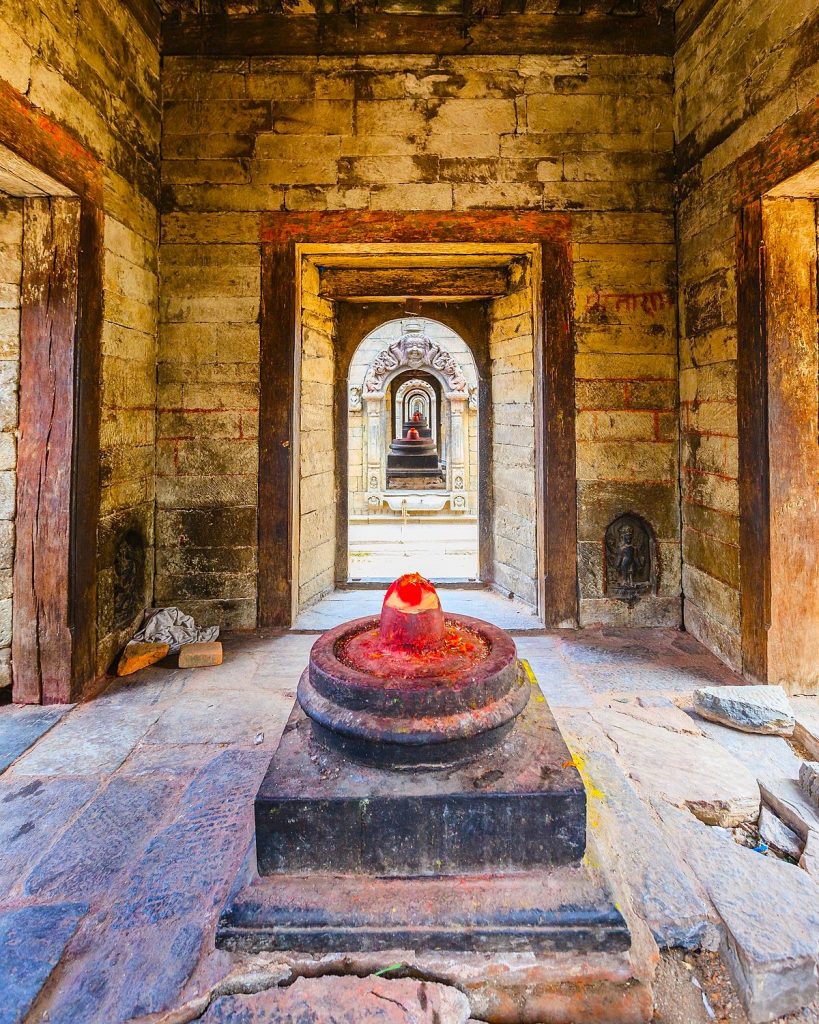
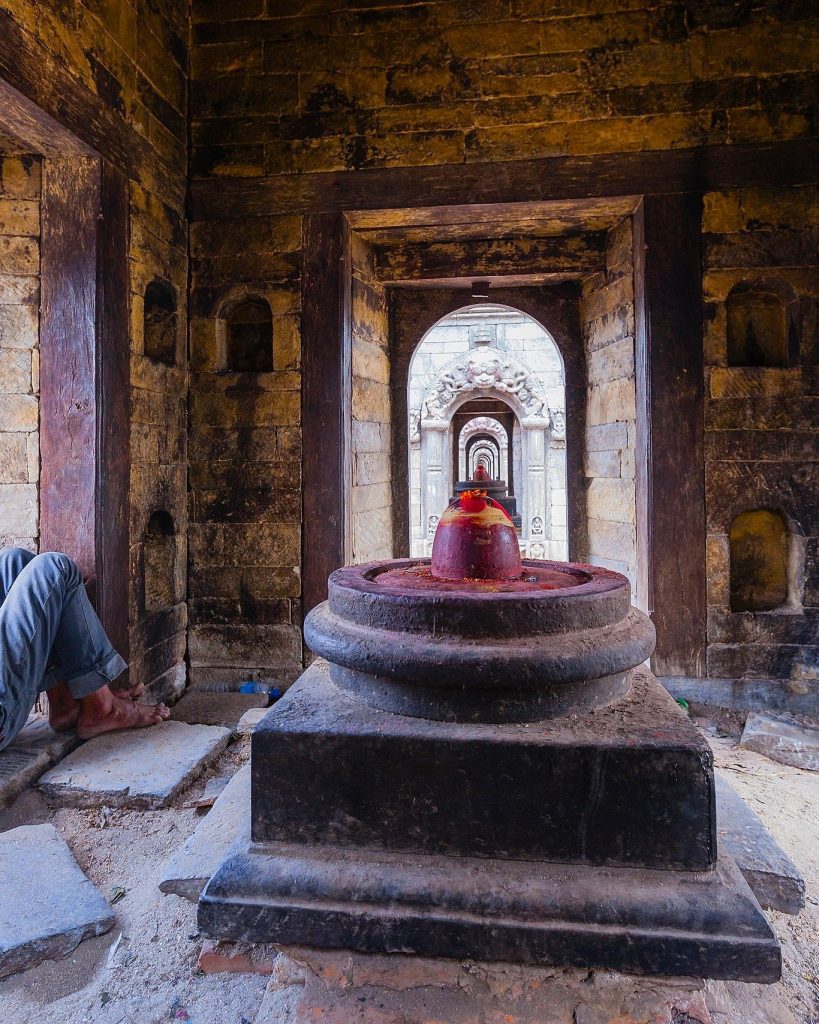
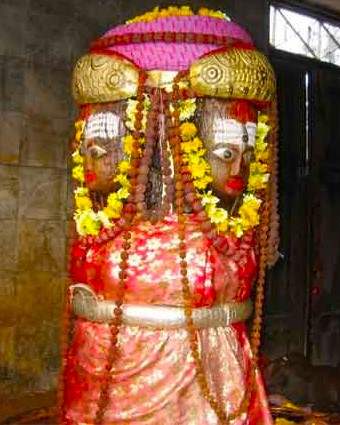
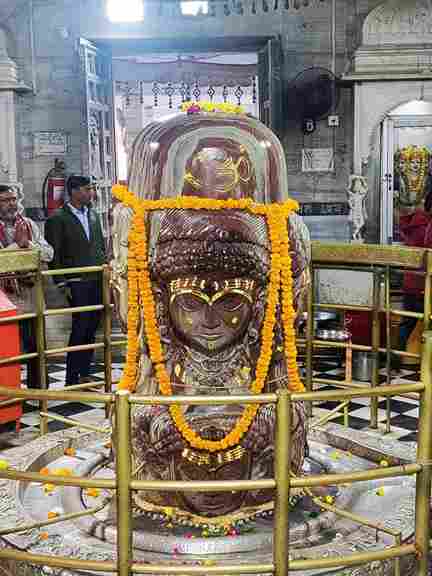
Pashupatinath Temple isn’t just about history and culture; it’s a treat for the eyes, too. The temple showcases classic Nepali architecture, complete with detailed wood carvings and gold touches that showcase Nepal’s skilled craftsmanship. Around the temple, you’ll find smaller shrines and statues. One of the standouts is the Nandi statue, dedicated to Lord Shiva’s vehicle.
Inside the temple, the Chaturmukha Linga is a sight to behold. It represents different facets of Shiva. While you can’t snap pictures in the holiest parts, you can still capture the beauty of the rituals by the Bagmati River. The whole place buzzes with devotion, filled with chants and the scent of incense, making it a profoundly spiritual spot to visit.
| Mode of Transport | Route/Details | Estimated Time |
|---|---|---|
| By Air | Fly to Tribhuvan International Airport (TIA) in Kathmandu | Flight time varies by location |
| By Taxi | From Kathmandu city center to Pashupatinath via local taxis | 15-20 minutes |
| By Bus | Take a local bus heading towards Gaushala or Chabahil | 30-45 minutes (traffic-dependent) |
| By Private Vehicle | Drive via Ring Road or Tilganga to reach Pashupatinath | 15-30 minutes from city center |
| Walking | Walk from Gaushala or nearby hotels to Pashupatinath | 15-20 minutes |
Conclusion
Why visit Pashupatinath Temple? It’s more than just a historical site; it’s a vibrant Hindu culture hub filled with ancient traditions and stunning architecture. Located by the Bagmati River in Kathmandu, it’s a peaceful escape from the city’s hustle. Here, you can see history in action, admire the detailed temple designs, and dive into deep spiritual practices.
Enjoy the daily rituals, festive celebrations, or just find a quiet spot to reflect. Visiting Pashupatinath is like stepping into the heart of Nepalese culture. It’s not just a trip; it’s an experience that connects you with the soul of Nepal.
Visit BestBengaluru.com for in-depth articles on India’s magnificent temples.

Deepak Sharma is a passionate writer and avid traveler who specializes in uncovering the beauty and history of India’s attractions and temples. A graduate of Delhi University, Deepak has a deep-rooted love for his country and its rich cultural heritage.
